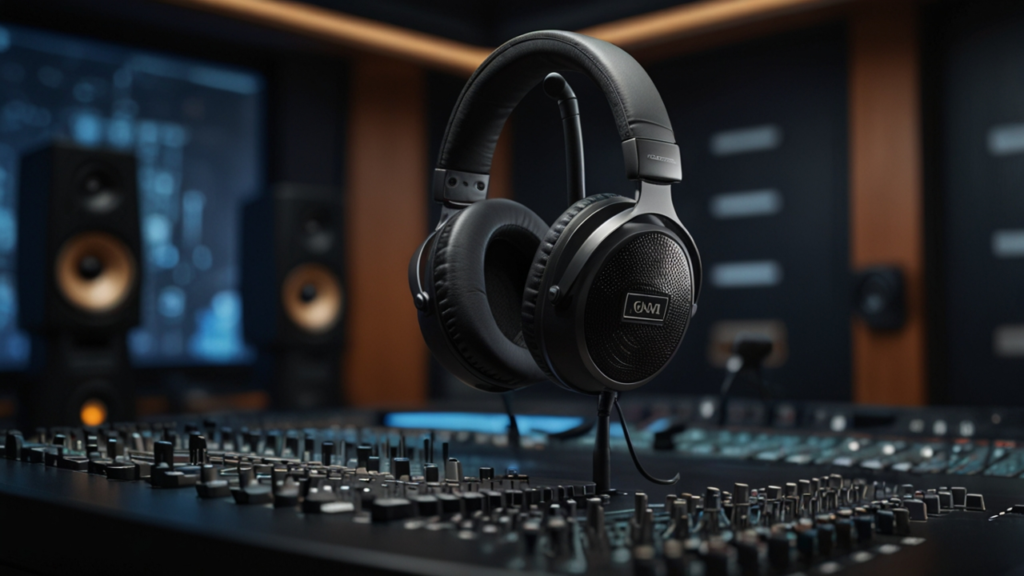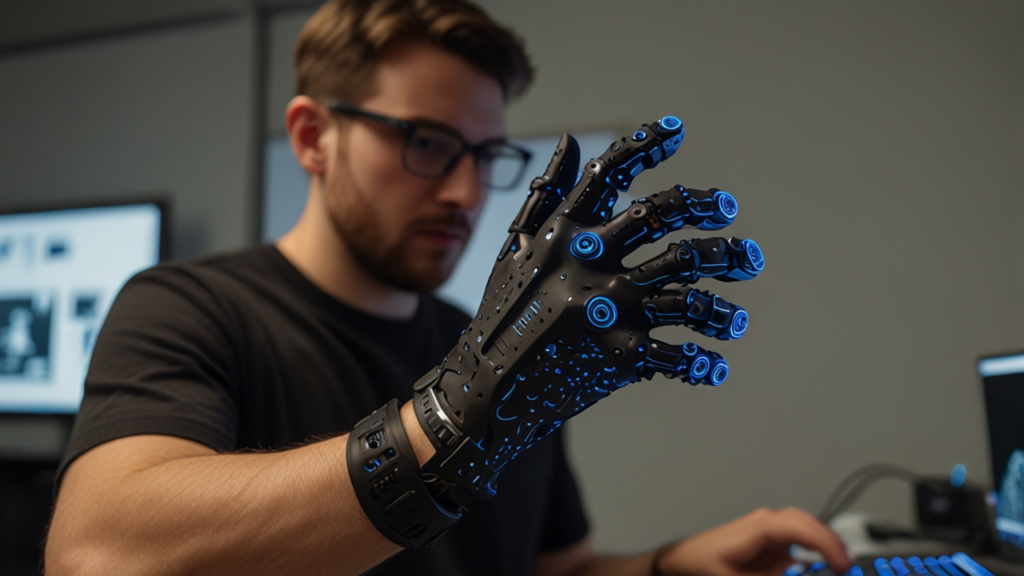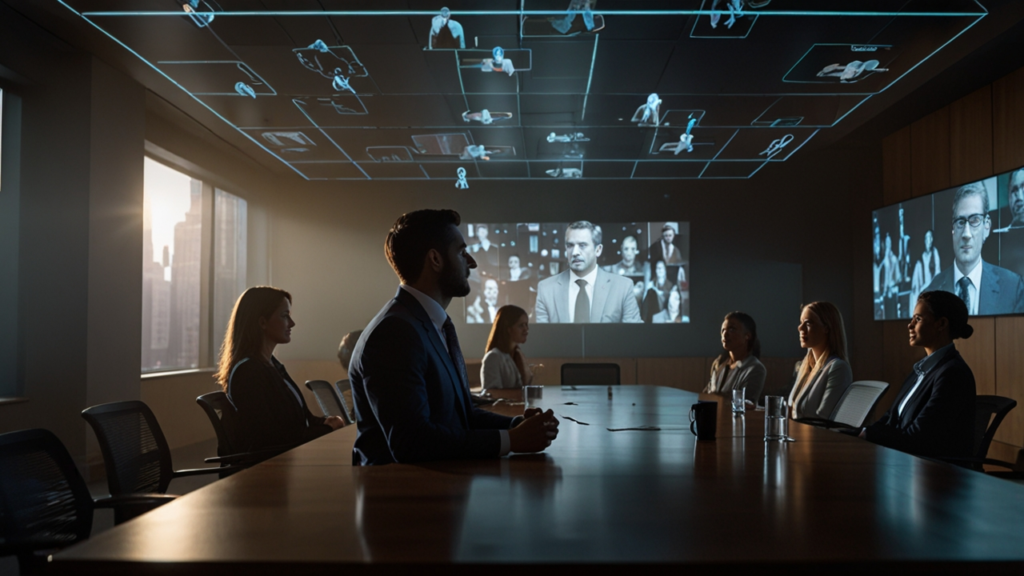Spatial Audio Transformation 2025
Welcome to our in‐depth look at how innovation is reshaping sound experience. We explore a transformative journey brought by cutting‐edge technology in audio. This article reflects on research, real-world examples, and future predictions.
In today’s digital age, listening is evolving from mere audio playback to a complete sensory immersion. We dive into technical breakthroughs and industry trends that spark change. Enjoy a friendly, clear exposition that resonates with both experts and newcomers alike.
Join us as we uncover the evolution, applications, and future directions of this revolutionary technology. Feel free to comment or share your thoughts at any moment.
Table of Contents
Introduction to Spatial Audio
Fundamentals and Key Innovations
The journey begins with a basic understanding of how advanced sound systems incorporate immersive technologies. In this section, we explore the pioneering methods of recording and rendering spatial sound. Researchers first experimented with binaural recordings, wherein two separate microphones emulate human hearing. For example, early dummy head systems laid the groundwork by capturing subtle differences like interaural time differences and interaural level differences.
Critical developments were rooted in the late 19th century, when the invention of binaural audio preceded even the era of amplifiers. During these early days, headphones for radios and telephone earpieces were prevalent. The evolution of recording techniques gradually led to incorporating head-related transfer functions to mimic real-life listening experiences.
By understanding these fundamentals, you can appreciate how innovation has sparked an entire transformation. Have you ever experienced a recording that made you feel as if you were standing in the center of a concert hall? For more information on historical breakthroughs, see this detailed study on spatial evolution. Additionally, check out Cutting-Edge Technologies for related insights.
Benefits and Impact on User Experience
Understanding the benefits is essential. Listeners are granted an experience that goes far beyond flat stereo sound. The technology ensures realistic audio reproduction, enhancing clarity and presence. With crisp and localized sound, every nuance is heard as intended by the creators.
Moreover, technological applications afford a leap in usability for movies, music, and gaming alike. Historical milestones — such as the introduction of the binaural technique on commercial recordings — testify to its significant impact on user experience. Early inventors and companies like Neumann played key roles in establishing commercial viability with their KU-80 system.
Reflect on your favorite audio experience in a movie theater or on your headphones. How did the setup make you feel more engaged? This evolution has redefined how we interact with sound, making every listening moment immersive.
Evolution and History of Spatial Audio
Early Experiments and Technological Milestones
The evolution of audio techniques traces back to the late 19th century, when the foundation for binaural experiments was laid. In those days, enthusiasts and researchers relied on basic equipment—telephone earpieces and rudimentary microphones—to capture sound from a human-centric perspective. Such early experiments ignited a passion for rendering sound in a more natural and enveloping manner.
One of the landmark innovations was the introduction of the moving-coil loudspeaker. This development temporarily shifted the focus from binaural to stereophonic sound but laid the groundwork for future spatial developments. In 1972, German company Neumann introduced the first commercial head-based binaural system at the International Radio and Television Exhibition in Berlin. This milestone is well documented in academic sources like this visual history.
As you consider these advancements, ask yourself: how have these historical innovations influenced today’s audio experiences? Discover more innovations by exploring Smart Devices insights.
Milestones in Commercial Adoption and Industry Growth
In the decades following early experiments, the commercial landscape changed significantly. The reemergence of interest in high-fidelity recording techniques during the 1970s set the stage for modern applications. Companies including Sony, JVC, and Sennheiser entered the scene by introducing dummy head recording systems, sparking new standards in sound capture.
Musician collaborations also marked this evolution. For instance, Lou Reed’s “Street Hassle” (1978) became the first commercial pop album recorded using binaural techniques. Additionally, the development of Ambisonics in the 1970s expanded possibilities—using a system that allowed sound reproduction via any number of speakers rather than a one-to-one channel approach. Detailed specifics are available from research on arXiv.
Reflect on your favorite music recordings. Have you noticed an enhanced dimensional quality that makes you feel closer to the origin of each sound? Explore more evolution stories by visiting Innovative Solutions for further insights.
How 3D Sound Enhances Spatial Audio
The Role of Binaural and Object-Based Techniques
Advanced recording methods underpin the creation of realistic audio experiences. Techniques such as binaural recording capture sound using dual microphones arranged like human ears. This method is essential for delivering a perception of depth and spatial positioning in a three-dimensional sound environment.
Object-based audio, another breakthrough innovation, records individual sound sources accompanied by spatial metadata. Renderers then dynamically recreate a realistic environment based on available speaker configurations. These methods ensure listeners receive precise reproduction where each sound is positioned effectively in the acoustic space.
When you listen to your favorite immersive tracks, consider how these techniques contribute to the overall experience. Have you ever felt as if you were part of the performance? Explore more detail about these pioneering techniques on Apple Spatial Audio information.
Integration of Advanced Head-Tracking Algorithms
Modern systems incorporate dynamic head tracking to amplify realism. By monitoring head movements, these systems adjust audio signals so that sounds remain consistent within the virtual environment. The rapid advancement in sensor technology has made dynamic head tracking a practical solution for delivering a truly embodied listening experience.
This innovative approach means that when you move your head, the sound fields shift in accordance with your position, preserving the illusion of a live sound performance. Such intelligent adjustment enhances user comfort and provides a more natural audio perspective without compromising on detail or clarity.
Consider how this technology transforms media experiences. Have you noticed sound shifting as you interact with your device? For more advanced system insights, explore the latest reviews on Soundcore Speaker Insights.
Immersive Acoustics Systems and Their Applications
Applications in Entertainment and Gaming
Entertainment industries have embraced innovative audio systems that deliver engaging experiences for audiences. Modern home theater systems now integrate multi-channel speaker setups which include height channels. These systems, when combined with binaural rendering for headphones, enable an audience to experience nuanced sound in every scene.
Gaming too has benefited substantially from these developments. Advanced audio techniques provide players with precise directional cues, enhancing realism and immersion in virtual worlds. Such setups allow gamers to localize sounds accurately, whether footsteps, ambient noises, or in-game communications, elevating the overall gaming experience.
Reflect on a time you felt fully immersed in a game or movie. What emotional impact did the sound quality have on you? Discover further information by visiting Future Devices and learn how modern systems integrate with our everyday lives.
Impact on Medical and Educational Technologies
Beyond entertainment, audio systems have found significant roles in educational and healthcare domains. In classrooms, clear and spatially distinct sound can improve communication and comprehension for students. Audio clarity becomes even more vital in telemedicine and remote therapy sessions where accurate sound localization aids in better diagnosis and understanding.
Modern acoustic systems are being tailored to create environments that mitigate distraction and foster focus. This cross-disciplinary adoption demonstrates the broad impact of advancements in audio technology. For example, researchers have employed sound engineering techniques to design spaces that promote relaxation and creativity.
Have you experienced an environment that fundamentally changed your learning or healing process due to advanced sound design? Engage with this subject further by checking insights under New Gadgets.
Real-World Case Studies of Spatial Audio
Case Studies in Music Production and Distribution
Historical and contemporary case studies highlight how cutting-edge audio systems have revolutionized music production. For instance, Apple Music’s implementation of Dolby Atmos has led to thousands of tracks being remixed and remastered to support a more immersive presentation. This move was catalyzed by the earlier experimental work on binaural recordings, such as Lou Reed’s groundbreaking “Street Hassle” album (1978). Industry leaders continue to pioneer these innovative techniques.
Over time, projects that incorporate fully realized audio environments have set new standards in the entertainment sector. The integration of object-based audio allows producers to control the spatial placement of every element in a mix. These techniques offer both creative freedom and technical precision, resulting in tracks that feel exceptionally lifelike.
Have you listened to any tracks that provided a multidimensional soundstage? You might find it intriguing to compare production techniques used then and now. Moreover, detailed comparisons can be seen below.
Comprehensive Comparison of Case Studies
| Example | Inspiration | Application/Impact | Region |
|---|---|---|---|
| KU-80 System | Binaural Recording | Commercial head-based audio capture | Europe |
| Street Hassle Album | Binaural Techniques | First pop album using binaural audio | Global |
| Dolby Atmos on Apple Music | Object-based Audio | Immersive music experience | North America |
| Ambisonics Systems | 360° Audio Capture | Flexible multi-speaker integration | Europe, Asia |
| Gaming Audio Systems | Dynamic Head-Tracking | Enhanced player immersion | Global |
Listening to these examples, can you identify the key factors that make a production feel authentic? By engaging with these case studies, you realize that innovation and creativity go hand in hand. Reflect on your own musical journey and consider the impact of new production techniques.
Success Stories in Virtual Reality and Film
Virtual reality and film are industries where innovative audio implementation truly elevates the user experience. Films now boast cinema-like sound systems with multiple channels that present a clear and captivating auditory landscape. Streaming platforms frequently offer content with support for advanced audio formats, enhancing viewer engagement dramatically.
VR applications benefit as well. Developers integrate sophisticated techniques to position sound sources correctly in an imaginary environment, providing users with directional cues that improve immersion and interaction. The rise of Ambisonics in creating a 360° sound environment is a key example of how these techniques are applied with success.
Have you ever felt as though you were inside the movie or game, thanks to advanced audio design? These success stories highlight that consistent innovation drives both the evolution of sound design and overall user satisfaction.
Directional Audio in Modern Spatial Audio Solutions
Technical Framework and Signal Processing
Modern audio systems are engineered with advanced algorithms that ensure precision in sound placement. Directional processing methods combine state-of-the-art signal processing with dynamic head tracking, resulting in sound that stays consistent as you move. This technical framework comprises fixed-channel processing alongside object-based methods to create a coherent soundscape.
Engineers utilize careful calibration of head-related transfer functions alongside sophisticated dynamic tracking to maintain accuracy. The impact of these advancements is evident in daily usage across consumer and professional markets. Tools and digital platforms facilitate smooth integration without compromising quality.
As you assess the technical intricacies, think about how these complex signal processing techniques improve your listening experience. Did you ever notice that sounds appear to follow you when you change directions? Such details bring a new layer of depth to media consumption.
User-Centric Design and Customization
Designers aim to tailor audio experiences to individual preferences. Modern solutions allow calibration using custom measurements of ear anatomy. This ensures that each listener perceives sound with the highest fidelity possible. Customization features are increasingly embedded into consumer devices, revealing a profound understanding of individual variances.
Such user-centric design also improves accessibility and usability. Listeners may fine-tune settings to maximize clarity and immersion, especially in directional processing systems. This adaptability delivers tremendous value in environments where personal preferences significantly impact the auditory experience.
Have you personalized your audio settings to suit your unique hearing profile? The power of customization transforms sound into a personal journey, bridging the gap between technology and everyday experience.
Future Trends: Sound Field and Beyond
Advancements in Recording Techniques and Production Tools
The future promises continued sophistication in recording techniques that capture live environments with unprecedented clarity. New microphone arrays and improved recording methodologies are simplifying the creation of large-scale, multidimensional soundscapes. Production software now offers intuitive interfaces, enabling creators to design acoustic environments with ease.
This trajectory is driven by continuous research in signal processing and machine learning, leading to tools that automatically optimize sound rendering. As production environments evolve, so too does the ability to maintain a high fidelity sound field using compact and affordable techniques. Data from academic research shows trends toward improving user interfaces for professional audio systems, as outlined in arXiv studies.
Have you experimented with new recording tools that allow more creative expression? Consider the implications of these innovations on future production practices.
Emergence of New Application Domains and Industry Standards
Looking ahead, the integration of advanced audio technologies into various domains is expected to burgeon. Industries such as teleconferencing, education, and even therapy are increasingly recognizing the potential of precise audio reproduction. The push for standardization across formats is steadily addressing interoperability issues, paving the way for more uniform experiences.
Innovative uses in augmented reality further blur the line between real and virtual audio environments. Researchers predict that personalized calibration processes, including custom HRTF data, will become standard. Such trends are already pointed out in industry discussions and academic articles.
Reflect on your vision of the future—will these emerging trends transform daily interactions with sound? As you explore these new horizons, consider how everyday communication might evolve due to technological advancements.
Design Beyond Boundaries
This section highlights the art of creative problem-solving and embodied design thinking. The practice of innovative methodologies transcends traditional boundaries, bridging disciplines like art, engineering, and human behavior. The convergence of literature on design and technological developments fuels interdisciplinary collaboration that drives change in unexpected ways.
In creative problem-solving, every challenge becomes an opportunity to rethink the status quo. Designers harness lateral thinking methods to approach problems with fresh perspectives, encouraging divergence before eventual convergence on optimized solutions. This process is marked by iterative experimentation as teams explore prototypes and strategic frameworks to solve real-world issues.
From sketching initial ideas to developing advanced digital models, the integration of design thinking principles leads to breakthrough inventions. Collaborators from different fields contribute their expertise to refine each idea, ensuring that the final result is both functional and inspiring. In many cases, this approach not only enhances product performance but also deepens the value in the user experience.
When creativity meets rigor, the results are transformative. Whether you are brainstorming in a workshop or engaged in an intense collaborative session via remote platforms, the essence of creative problem-solving lies in the willingness to explore unconventional avenues. This dynamic process embraces failure as a stepping stone, leading to unexpected innovations that redefine industry standards.
Have you ever been part of a project where the collaborative spirit led to a breakthrough? These experiences remind us that the art of creativity goes beyond conventional metrics and opens up new realms of possibility. Embracing a fearless attitude in design can spark ideas that reimagine the way we interact with our environments. In essence, this philosophy reaffirms that creative problem-solving is an essential ingredient for progress.
FAQ
What exactly is Spatial Audio?
Spatial Audio is a revolutionary sound technology that replicates a three-dimensional listening environment. It uses binaural or object-based techniques to impart realistic audio cues such as direction, depth, and perspective.
How did Spatial Audio originate?
This technology traces its roots back to the late 19th century with the advent of binaural recording. Over time, it evolved through significant milestones including the KU-80 system and Ambisonics techniques, eventually transforming due to digital innovations.
What industries benefit the most from this innovation?
Industries such as entertainment, gaming, film production, telemedicine, and education are deeply impacted. Enhanced algorithms and head-tracking systems ensure that users enjoy immersive and contextually relevant sound experiences.
Can users customize their experience with Spatial Audio?
Yes, modern systems increasingly incorporate user-centric features such as custom calibration and personalized head-related transfer functions to adapt to individual auditory profiles.
What does the future hold for Spatial Audio?
The future is poised for further integration, with advancements in recording technologies and industry standardization. Emerging applications include augmented reality and expanded teleconferencing, promising a more interconnected and immersive sound environment.
Conclusion
In summary, our exploration of Spatial Audio highlights transformative milestones that have changed the way we experience sound. This journey from early binaural experiments to sophisticated modern systems has redefined media, gaming, and communication environments.
Reflect on the evolution and consider how these developments enrich your life. The convergence of technology and creativity paves the way for a future where listening becomes an immersive art. For more information, feel free to Contact our team.
Have you experienced an audio system that completely redefined your listening environment? Share your experiences and join the conversation about this cutting-edge innovation.
Explore more exciting insights in the Mobile & Gadgets category.
Discover more from Fabelo.io
Subscribe to get the latest posts sent to your email.



